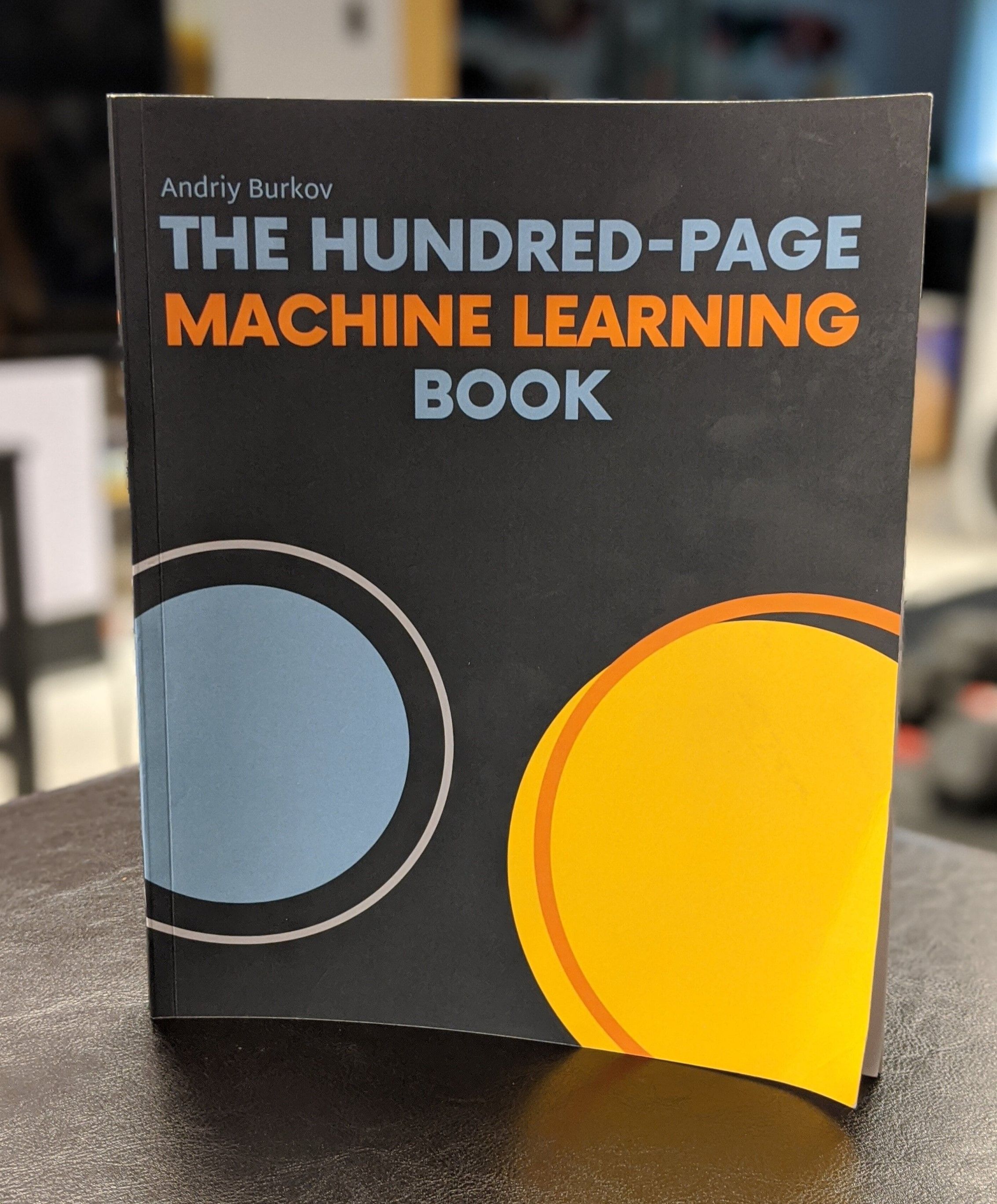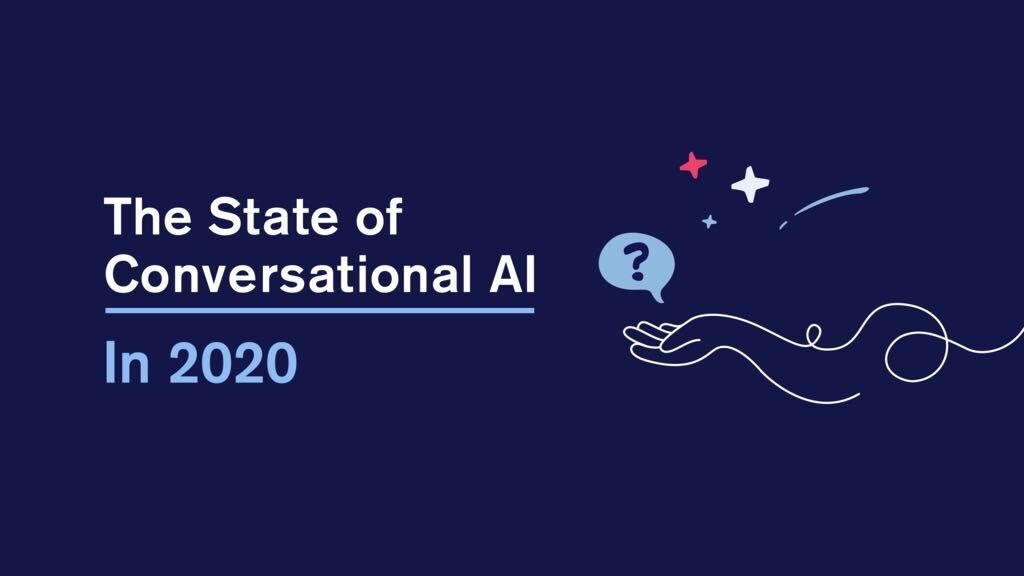Let's learn about Statistics via these 70 free stories. They are ordered by most time reading created on HackerNoon. Visit the /Learn Repo to find the most read stories about any technology.
1. The State of Vue 2022: What Has Changed In The Last 12 Months
 Check the latest statistics on the usage of Vue and learn why this framework is growing in popularity.
Check the latest statistics on the usage of Vue and learn why this framework is growing in popularity.
2. Over 60% of Writers Already Use AI in Their Writing Workflow
 Hackernoon polled readers on whether they would use AI tools for their writing/copywriting workflow. Nearly 70% are open to the idea.
Hackernoon polled readers on whether they would use AI tools for their writing/copywriting workflow. Nearly 70% are open to the idea.
3. How to Install RStudio on the WSL System
 If you are using Windows and don’t want to use the RStudio client on the Windows side, this method will work perfectly.
If you are using Windows and don’t want to use the RStudio client on the Windows side, this method will work perfectly.
4. Kannada-MNIST:A new handwritten digits dataset in ML town
 TLDR:
TLDR:
5. How Many Days of Your Life Have You Spent in an Uber?
 I've spent 12 days in Ubers over the last 3 years. Read this to find your own lifetime Uber stats.
I've spent 12 days in Ubers over the last 3 years. Read this to find your own lifetime Uber stats.
6. AB Testing For Digital Products
 An overview of AB testing during the design of digital products like UX, digital marketing advertisements and software development.
An overview of AB testing during the design of digital products like UX, digital marketing advertisements and software development.
7. What LinkedIn Tells Us About Developer Population in the World

8. Calculate Required Rate of Return With the Fama-French Three-Factor Model
 Investors are always evaluating the amount of risk they are willing to take for a certain expected return. Intuitively, the best investment maximizes the return
Investors are always evaluating the amount of risk they are willing to take for a certain expected return. Intuitively, the best investment maximizes the return
9. How to Predict News: Message Sequence Analysis & Digital Intuition
 We can be warned about upcoming events predominantly occurring under similar circumstances.
We can be warned about upcoming events predominantly occurring under similar circumstances.
10. Granger Causality: Principle of Cause and Effect Explained
 ... in a world full of data, we can understand the impact with clever methods. Meet Granger causality.
... in a world full of data, we can understand the impact with clever methods. Meet Granger causality.
11. How to Use Approximate Leave-one-out Cross-validation to Build Better Models
 How to use Approximate leave-one-out cross-validation for hyperparameter optimization and outlier detection for logistic regression and ridge regression
How to use Approximate leave-one-out cross-validation for hyperparameter optimization and outlier detection for logistic regression and ridge regression
12. How to Implement Gaussian Blurs
 A Gaussian blur is applied by convolving the image with a Gaussian function. We’ll take the Gaussian function and we’ll generate an n x m matrix.
A Gaussian blur is applied by convolving the image with a Gaussian function. We’ll take the Gaussian function and we’ll generate an n x m matrix.
13. Everything you need to know about YCombinator S19 startups
 It is not a secret to anyone that YCombinator is the most successful accelerator in the world. They have made well over 2,538 investments.
It is not a secret to anyone that YCombinator is the most successful accelerator in the world. They have made well over 2,538 investments.
14. Why AI is a Fear-Driven Discipline
 People are scared of AI. According to Genpact research:
People are scared of AI. According to Genpact research:
15. Top 5 Tech Startup Trends in 2020
 According to Statista, the global startup economy generates nearly $3 trillion. Startups have always been the driving force behind the world market, bringing new ideas, and transforming familiar business systems. Unfortunately, the economic crisis associated with Covid-19 has not spared this area.
According to Statista, the global startup economy generates nearly $3 trillion. Startups have always been the driving force behind the world market, bringing new ideas, and transforming familiar business systems. Unfortunately, the economic crisis associated with Covid-19 has not spared this area.
16. The Hundred-Page Machine Learning Book [Review]
 I first ordered The Hundred-Page Machine Learning book back in May and am only just now finishing it up. In COVID-time, that was about 10 years ago. As you might have inferred, this book is NOT a quick read. What it lacks in easy reading, it makes up for in efficiency. This book swallows up the heavyweight mathematics textbooks and spits out a slim product no thicker than the width of my smartphone. From page one all the way to page 136, Andriy Burkov, the author, does not waste a single word in distilling the most practical concepts in machine learning. You read that right. It is MORE than 100 pages! Sounds like the book has some bias. Get it? Now get ready for my hundred-page book review. Just kidding.
I first ordered The Hundred-Page Machine Learning book back in May and am only just now finishing it up. In COVID-time, that was about 10 years ago. As you might have inferred, this book is NOT a quick read. What it lacks in easy reading, it makes up for in efficiency. This book swallows up the heavyweight mathematics textbooks and spits out a slim product no thicker than the width of my smartphone. From page one all the way to page 136, Andriy Burkov, the author, does not waste a single word in distilling the most practical concepts in machine learning. You read that right. It is MORE than 100 pages! Sounds like the book has some bias. Get it? Now get ready for my hundred-page book review. Just kidding.
17. What if Street Crime Statistics Matched Those of Cybercrime?
 If street crime statistics matched those of cybercrime, our world would resemble the Wild West.
If street crime statistics matched those of cybercrime, our world would resemble the Wild West.
18. Statistics Cheat Sheet: A Beginner's Guide to Probability and Random Events
 A beginner’s guide to Probability and Random Events. Understand the key statistics concepts and areas to focus on to ace your next data science interview.
A beginner’s guide to Probability and Random Events. Understand the key statistics concepts and areas to focus on to ace your next data science interview.
19. Key 2022 Statistics in the No-Code/Low-Code Market
 We explore a low-code/no-code market poised for exponential growth in the coming years.
We explore a low-code/no-code market poised for exponential growth in the coming years.
20. Size Does Matter: Global Control Group for a Bank
 Learn how to approach data-driven measurement properly. See what unexpected results we got in a bank and get insights for your own data analytics journey.
Learn how to approach data-driven measurement properly. See what unexpected results we got in a bank and get insights for your own data analytics journey.
21. How Popular is Right-Wing Content on Facebook?
 Facebook has been criticized in the past because many believe they are allowing right-wing content to run rampant on the site.
Facebook has been criticized in the past because many believe they are allowing right-wing content to run rampant on the site.
22. Outlier Detection with Chi Square
 This is a simple method for outlier detection, the procedure basically is a Quantile of weibull distribution of the chi square test in python.
This is a simple method for outlier detection, the procedure basically is a Quantile of weibull distribution of the chi square test in python.
23. 3 Interesting NFT Statistics: How NFTs are Being Adopted Globally
 NFT ownership has increased throughout the globe, with Southeast Asian nations such as the Philippines, Thailand, and Malaysia leading the pack.
NFT ownership has increased throughout the globe, with Southeast Asian nations such as the Philippines, Thailand, and Malaysia leading the pack.
24. Correlation vs. Causation: Why Correlation Does Not Imply Causation
 The terms correlation and causation are quite often confused, however, they are not synonyms and this article specifies the main reasons why.
The terms correlation and causation are quite often confused, however, they are not synonyms and this article specifies the main reasons why.
25. How to Create A Funnel Chart In R
 Funnel Chart in R, A funnel chart is mainly used for demonstrates the flow of users through a business or sales process.
Funnel Chart in R, A funnel chart is mainly used for demonstrates the flow of users through a business or sales process.
26. The Intuition Behind the “LIME” Concept in AI & ML
 A preambular article describing the fundamental principles & intuition behind the “LIME” concept in Artificial Intelligence & Machine learning.
A preambular article describing the fundamental principles & intuition behind the “LIME” concept in Artificial Intelligence & Machine learning.
27. Hinge Loss - A Steadfast Loss Evaluation Function for the SVM Classification Models in AI & ML
 Researchers use an algebraic acme called “Losses” in order to optimise the machine learning space defined by a specific use case.
Researchers use an algebraic acme called “Losses” in order to optimise the machine learning space defined by a specific use case.
28. Digital Workspaces: Hacking the Future of Work
 A look at how to engage in the future of work through digital workspaces
A look at how to engage in the future of work through digital workspaces
29. [Infographic] The State of Conversational AI in 2020
 Conversational AI was always poised to take off in 2020. In fact, Gartner predicted that 80% of businesses would implement some sort of conversational interface by the end of this year. With the emergence of COVID-19 came compounded growth for the category - and I wanted to capture just how far we’ve come. So for the conversationally curious out there, I created this infographic that offers a clear depiction of where conversational AI stands at this very moment in time.
Conversational AI was always poised to take off in 2020. In fact, Gartner predicted that 80% of businesses would implement some sort of conversational interface by the end of this year. With the emergence of COVID-19 came compounded growth for the category - and I wanted to capture just how far we’ve come. So for the conversationally curious out there, I created this infographic that offers a clear depiction of where conversational AI stands at this very moment in time.
30. Beyond A/B Testing — Switchbacks and Synthetic Control Group
 Experimentation designing in the marketplace without AB-Testing using Synthetic Control Groups and Switchbacks.
Experimentation designing in the marketplace without AB-Testing using Synthetic Control Groups and Switchbacks.
31. Variance Inflation Factor - A Pertinent Statistical Metric for the Discernment of Multicollinearity

32. E-Commerce as the Cake, Not the Cherry on the Cake
 E-Commerce has spiraled due to the pandemic environment, leading to irreversibly enhanced online shopping.
E-Commerce has spiraled due to the pandemic environment, leading to irreversibly enhanced online shopping.
33. The Concept Behind "Mean Target Encoding" in AI & ML
 An introductory article describing the concept & intuition behind “Mean Target Encoding” in AI&ML, its pros, cons and implementation with a real-time example.
An introductory article describing the concept & intuition behind “Mean Target Encoding” in AI&ML, its pros, cons and implementation with a real-time example.
34. Console #17: Japanese Pizza Toast and Turtles

35. Top 7 Most Used Web Frameworks Among Developers Worldwide 2021 [Statistics]
 Top 7 Most Used Web Frameworks Among Developers Worldwide 2021 [Statistics]
Top 7 Most Used Web Frameworks Among Developers Worldwide 2021 [Statistics]
36. A Single Speed Test is Fun — Hundreds of Them, May Actually be More Accurate
 Releasing the first internal build of the NordVPN apps that included NordLynx – our brand new protocol built on the backbone of WireGuard® – was an exciting moment for the team. Everyone started posting their speed test results on Slack and discussing the variance. While most of the time NordLynx outperformed other protocols, there were some cases with slightly worse speed results.
Releasing the first internal build of the NordVPN apps that included NordLynx – our brand new protocol built on the backbone of WireGuard® – was an exciting moment for the team. Everyone started posting their speed test results on Slack and discussing the variance. While most of the time NordLynx outperformed other protocols, there were some cases with slightly worse speed results.
37. Why I Spent Years Writing a Children’s Book on Data Science
 I wrote a children's book on data science to inform others who have a hard time understanding data science and machine learning concepts, especially kids!
I wrote a children's book on data science to inform others who have a hard time understanding data science and machine learning concepts, especially kids!
38. Applying Statistical Analysis to Intraday Forex Trading Using SQL
 Statistical Analysis, Intraday Forex Trading, Using SQL
Statistical Analysis, Intraday Forex Trading, Using SQL
39. Variance is More Than Just A Statistician's Buzzword
 Explaining real world applications and the philosophy of statistical variance through finance, investing, and gambling.
Explaining real world applications and the philosophy of statistical variance through finance, investing, and gambling.
40. CLIP: An Innovative Aqueduct Between Computer Vision and NLP
 A rudimentary article describing the concept behind the "CLIP" algorithm in deep learning, its approach, implementation, scope & limitations.
A rudimentary article describing the concept behind the "CLIP" algorithm in deep learning, its approach, implementation, scope & limitations.
41. 👨🔬️ Top 10 Data Scientist Skills to Develop to Get Yourself Hired
 List of Top 10 Data Scientist skills that guaranteed employment. As well as a selection of helpful resources to master these skills
List of Top 10 Data Scientist skills that guaranteed employment. As well as a selection of helpful resources to master these skills
42. How a Data Scientist Sees a Deck of Cards

43. 12 Best Pre-Installed R Datasets Commonly Used for Statistical Analysis
 R programming is mostly used in statistical analysis and ML.
This article looks at the Best Pre-Installed R Datasets Commonly Used for Statistical Analysis.
R programming is mostly used in statistical analysis and ML.
This article looks at the Best Pre-Installed R Datasets Commonly Used for Statistical Analysis.
44. Radial Basis Functions: Types, Advantages, and Use Cases
 An introductory article explaining the basic intuition, mathematical idea & scope of radial basis function in the development of predictive machine learning.
An introductory article explaining the basic intuition, mathematical idea & scope of radial basis function in the development of predictive machine learning.
45. Use the 80/20 Rule with Moderation

46. TikTok's Engagement Rate is an Average of 5.96% in 2022
 Boost your social media strategies for 2022 by knowing the most important up-and-coming TikTok marketing trends and engagement stats.
Boost your social media strategies for 2022 by knowing the most important up-and-coming TikTok marketing trends and engagement stats.
47. How to Use Psychological Tricks to Bring Numbers to Life
 It’s easy to visualize placing 10 chairs in a room, but it’s difficult to visualize 1,000 chairs. In order to acquire an accurate frame-of-reference, most of us would need to start by sketching out a diagram. Understanding this and applying it to business, the last thing you want is for your customer to have to hunt down a pen, paper and calculator in order to understand your numerically-based product features - don’t assign homework. Captivate customer attention by applying these clever ways to convert numbers into things people care about.
It’s easy to visualize placing 10 chairs in a room, but it’s difficult to visualize 1,000 chairs. In order to acquire an accurate frame-of-reference, most of us would need to start by sketching out a diagram. Understanding this and applying it to business, the last thing you want is for your customer to have to hunt down a pen, paper and calculator in order to understand your numerically-based product features - don’t assign homework. Captivate customer attention by applying these clever ways to convert numbers into things people care about.
48. Use Up-Sampling and Weights to Address Imbalance Data Problem
 Have you worked on machine learning classification problem in the real world? If so, you probably have some experience with imbalance data problem. Imbalance data means the classes we want to predict are disproportional. Classes that make up a large proportion of the data are called majority classes. Those that make up a smaller portion are minority classes. For example, we want to use machine learning models to capture credit card fraud, and fraudulent activities happens approximately 0.1% out of millions of transactions. The majority of regular transactions will impede the machine learning algorithm to identify patterns for the fraudulent activities.
Have you worked on machine learning classification problem in the real world? If so, you probably have some experience with imbalance data problem. Imbalance data means the classes we want to predict are disproportional. Classes that make up a large proportion of the data are called majority classes. Those that make up a smaller portion are minority classes. For example, we want to use machine learning models to capture credit card fraud, and fraudulent activities happens approximately 0.1% out of millions of transactions. The majority of regular transactions will impede the machine learning algorithm to identify patterns for the fraudulent activities.
49. Why Algorithmic Fairness is Elusive
 In 2016, Google photos classified a picture of two African-Americans as “gorillas.” Two years later, Google had yet to do more than remove the word “gorillas” from its database of classifications. In 2016, it was shown that Amazon was disproportionately offering one-day shipping to European-American consumers. In Florida, algorithms used to recommend detention and parole decisions on the basis of risk of recidivism were shown to have a higher error rate among African-Americans, such that African-Americans were more likely to be incorrectly recommended for detention who would not go on to re-offend. When translating out of a language with gender-neutral pronouns, and into languages with gendered pronouns, Google’s word2vec neural network injects gender stereotypes into translations, such that pronouns become “he” when in conjunction with “doctor” (or “boss,” “financier,” etc.) but become “she” when translated in conjunction with “nurse” (or “homemaker,” or “nanny,” etc.).
In 2016, Google photos classified a picture of two African-Americans as “gorillas.” Two years later, Google had yet to do more than remove the word “gorillas” from its database of classifications. In 2016, it was shown that Amazon was disproportionately offering one-day shipping to European-American consumers. In Florida, algorithms used to recommend detention and parole decisions on the basis of risk of recidivism were shown to have a higher error rate among African-Americans, such that African-Americans were more likely to be incorrectly recommended for detention who would not go on to re-offend. When translating out of a language with gender-neutral pronouns, and into languages with gendered pronouns, Google’s word2vec neural network injects gender stereotypes into translations, such that pronouns become “he” when in conjunction with “doctor” (or “boss,” “financier,” etc.) but become “she” when translated in conjunction with “nurse” (or “homemaker,” or “nanny,” etc.).
50. How to Retrieve Player Stats from the NHL's undocumented REST API
 It's that time of year again. Summer is coming to an end, Autumn is around the corner, and the NHL season is about to begin.
It's that time of year again. Summer is coming to an end, Autumn is around the corner, and the NHL season is about to begin.
51. The Importance of Hypothesis Testing
 Hypothesis tests are significant for evaluating answers to questions concerning samples of data.
Hypothesis tests are significant for evaluating answers to questions concerning samples of data.
52. Detecting Changes in COVID-19 Cases with Bayesian Models
 Bayesian change point model to estimate the date that the number of new COVID-19 cases starts to flatten in different countries.
Bayesian change point model to estimate the date that the number of new COVID-19 cases starts to flatten in different countries.
53. 3 Data Distributions for Counts in Layman’s Terms
 Counts are everywhere, so no matter your background, these data distributions will come in handy.
Counts are everywhere, so no matter your background, these data distributions will come in handy.
54. How I Broke Into Data Science
 A software engineer’s journey into data science at Yelp and Uber
A software engineer’s journey into data science at Yelp and Uber
55. Who even reads HackerNoon?
 You, obviously. And millions of people from around the world. What audience are you advertising to? Who are you writing for? Learn more about our readers here.
You, obviously. And millions of people from around the world. What audience are you advertising to? Who are you writing for? Learn more about our readers here.
56. Numbers Don't Lie But They Are Easily Misinterpreted All The Time
 therefore a working compromise between these 2 extremes should be found on a case-by-case basis
therefore a working compromise between these 2 extremes should be found on a case-by-case basis
57. Model Calibration in Machine Learning: An Important but Inconspicuous Concept
 A prelusive article comprehending the concept behind model calibration, its importance and usage in machine learning model development.
A prelusive article comprehending the concept behind model calibration, its importance and usage in machine learning model development.
58. The Notions behind “Model-Based” and “Instance-Based” Learning in AI & ML
 A prelude article elucidating the fundamental principles and differences between “Model-based” & “Instance-based” learning in the branches of Artificial Intelligence & Machine learning.
A prelude article elucidating the fundamental principles and differences between “Model-based” & “Instance-based” learning in the branches of Artificial Intelligence & Machine learning.
59. Random: Meaning in Everyday Life and in Science
 “That’s so random!” Common phrase used to express something is unexpected or without a pattern. Does random mean something different in science?
“That’s so random!” Common phrase used to express something is unexpected or without a pattern. Does random mean something different in science?
60. 40% Americans Do Not Know What Affects Their Credit Score
 Your customers’ credit score is one of the most important numbers of their financial lives. This three-digit number is the most used credit scoring model by lenders for evaluating a borrower's creditworthiness or the likelihood that they’ll repay the money.
Your customers’ credit score is one of the most important numbers of their financial lives. This three-digit number is the most used credit scoring model by lenders for evaluating a borrower's creditworthiness or the likelihood that they’ll repay the money.
61. Making Sense of Bitcoin's Volatility Clustering and How To Take Advantage of it

62. [Dev Update] Hacker Noon + Google Analytics = Happy Authors
 Austin here, your friendly neighborhood software engineer from Hacker Noon, with some exciting news! We are pleased as punch to announce that contributing writers can now see pageviews and total time reading for all stories published with Hacker Noon since we began in 2016. How cool is that? Previously our stats page was only accessible for recent story performance.
Austin here, your friendly neighborhood software engineer from Hacker Noon, with some exciting news! We are pleased as punch to announce that contributing writers can now see pageviews and total time reading for all stories published with Hacker Noon since we began in 2016. How cool is that? Previously our stats page was only accessible for recent story performance.
63. A Programmer's Guide to Crack 'Twice the Work, Half the Time' Code
 Modern methods of software measurement do not provide a strong base for continuous improvement. This article tries to fill this gap.
Modern methods of software measurement do not provide a strong base for continuous improvement. This article tries to fill this gap.
64. Statistics Show AI Adoption and Investment has Risen Rapidly in the Past 2 Years
 The concept of artificial intelligence as a non-human intelligence originated in the 1950s, but no one then could have imagined what success AI would achieve in the 2020s. In just 70 years, we have had bots that can learn, solve complex computational problems, write related texts, generate images and music, and analyze tons of information in seconds.
The concept of artificial intelligence as a non-human intelligence originated in the 1950s, but no one then could have imagined what success AI would achieve in the 2020s. In just 70 years, we have had bots that can learn, solve complex computational problems, write related texts, generate images and music, and analyze tons of information in seconds.
65. Breaking Down Secretary Problem
 What did you think of when you had a crush on someone? Did you fantasize about marriage with him/her? When you were in some serious relationship, did you plan marriage with your partner? How did the relationship turn out? Some relationships turn into a marriage, and some don’t. Hearing stories of many friends, I see extremely few people being in a relationship (and later marrying) with only one person whole over their life.
What did you think of when you had a crush on someone? Did you fantasize about marriage with him/her? When you were in some serious relationship, did you plan marriage with your partner? How did the relationship turn out? Some relationships turn into a marriage, and some don’t. Hearing stories of many friends, I see extremely few people being in a relationship (and later marrying) with only one person whole over their life.
66. Key Application Performance Metrics From the Viewpoint of a Statistician-Turned-Developer

67. #CorrelateThis - The Neural Activity of Mice Indicates Cryptocurrency Price Fluctuations
 In his research, Gvido reported the discovery of neurons that showed a neural correlation to the price fluctuations of the main cryptocurrencies!
In his research, Gvido reported the discovery of neurons that showed a neural correlation to the price fluctuations of the main cryptocurrencies!
68. These Are The Secret Weapons of Fake News
 Modern fake news has evolved into a complex organism, carefully designed to hide its deceptive mechanisms from any potential victim. But although the fake news field has grown into every possible digital channel, the truth is that at its core, in order to be effective, it still relies on exploiting our most basic human characteristics.
Modern fake news has evolved into a complex organism, carefully designed to hide its deceptive mechanisms from any potential victim. But although the fake news field has grown into every possible digital channel, the truth is that at its core, in order to be effective, it still relies on exploiting our most basic human characteristics.
69. Simple Tips For A Successful Application Performance Monitoring
 You finally went live, congratulations! Now what?
You finally went live, congratulations! Now what?
70. Quantifying Variability: Variance, Standard Deviation, and Coefficient of Variation
 There are many ways to quantify variability, however, here we will focus on the most common ones: variance, standard deviation, and coefficient of variation. In the field of statistics, we typically use different formulas when working with population data and sample data.
There are many ways to quantify variability, however, here we will focus on the most common ones: variance, standard deviation, and coefficient of variation. In the field of statistics, we typically use different formulas when working with population data and sample data.
Thank you for checking out the 70 most read stories about Statistics on HackerNoon.
Visit the /Learn Repo to find the most read stories about any technology.

